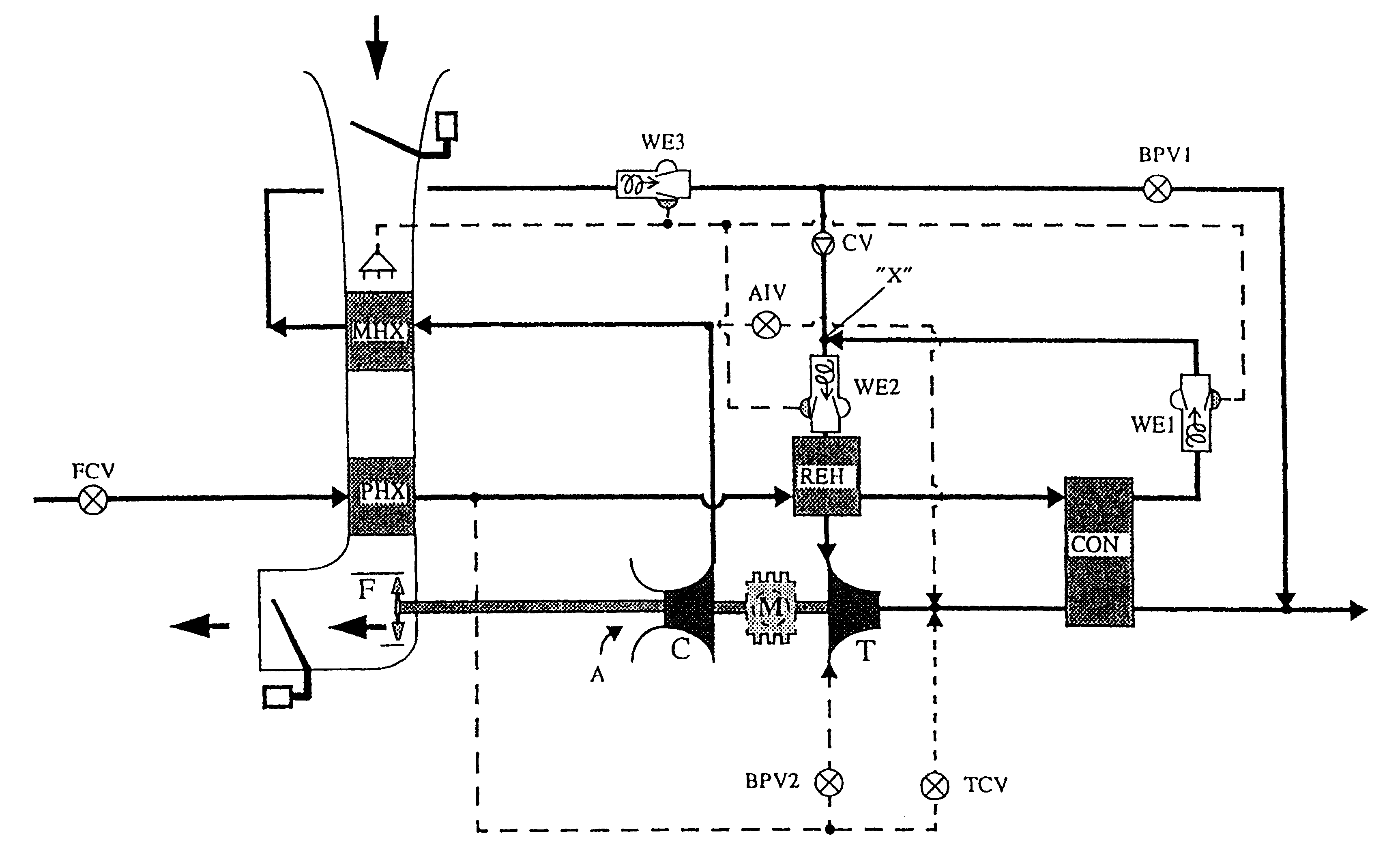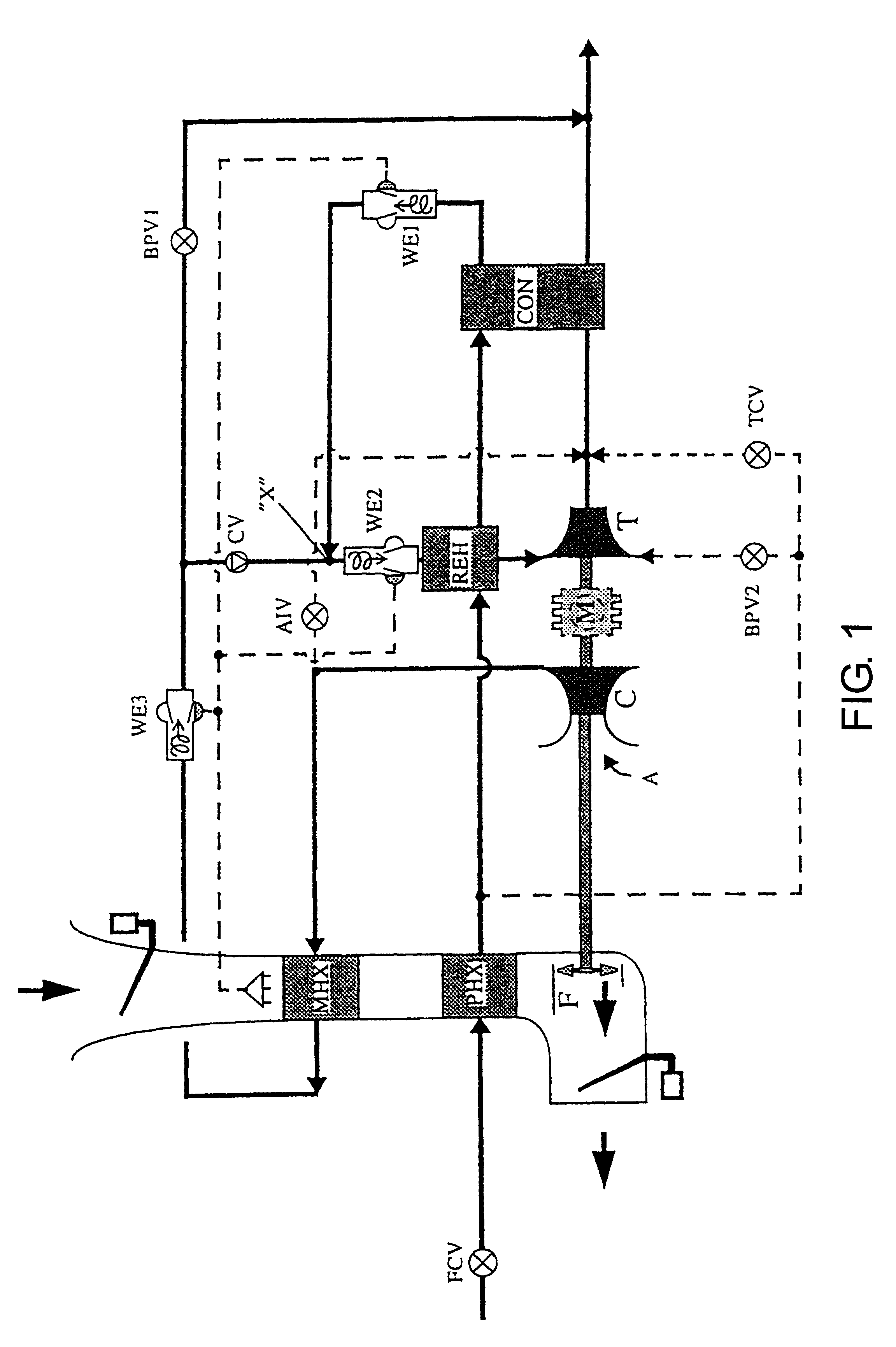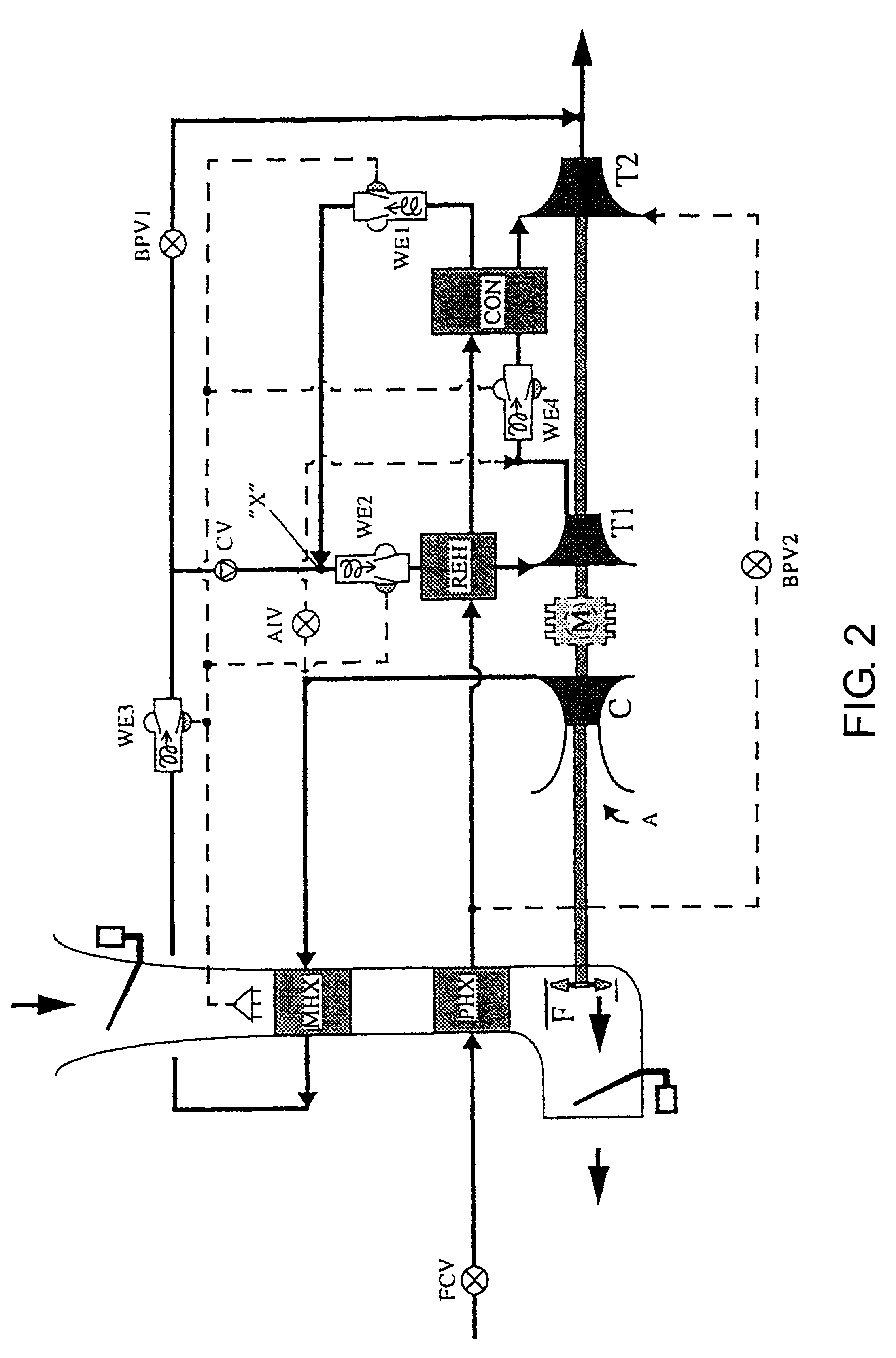Air-conditioning system for airplane cabin
a technology for air conditioning systems and airplane cabins, applied in the direction of air-treatment apparatus arrangements, applications, light and heating equipment, etc., can solve the problems of ice formation in the prepared fresh air, destroying the surface of the turbine wheel and the turbine nozzle, and extremely dry tapped power unit air
- Summary
- Abstract
- Description
- Claims
- Application Information
AI Technical Summary
Benefits of technology
Problems solved by technology
Method used
Image
Examples
Embodiment Construction
Further scope of applicability of the present invention will become apparent from the detailed description given hereinafter. However, it should be understood that the detailed description and specific examples, while indicating preferred embodiments of the invention, are given by way of illustration only, since various changes and modifications within the spirit and scope of the invention will become apparent to those skilled in the art from this detailed description.
FIG. 1 shows an air-conditioning system that comprises a tapped air circuit and another circuit for air sucked from the surroundings ("ambient air circuit"). The tapped air circuit largely corresponds to the air-conditioning system described using FIG. 4 with respect to the state of the art. However, the tapped airflow is not further compressed after passing the primary heat-exchanger PHX, but rather it is conveyed immediately into the high pressure water extraction circuit. A compression of the tapped airflow is not n...
PUM
 Login to View More
Login to View More Abstract
Description
Claims
Application Information
 Login to View More
Login to View More - R&D
- Intellectual Property
- Life Sciences
- Materials
- Tech Scout
- Unparalleled Data Quality
- Higher Quality Content
- 60% Fewer Hallucinations
Browse by: Latest US Patents, China's latest patents, Technical Efficacy Thesaurus, Application Domain, Technology Topic, Popular Technical Reports.
© 2025 PatSnap. All rights reserved.Legal|Privacy policy|Modern Slavery Act Transparency Statement|Sitemap|About US| Contact US: help@patsnap.com



